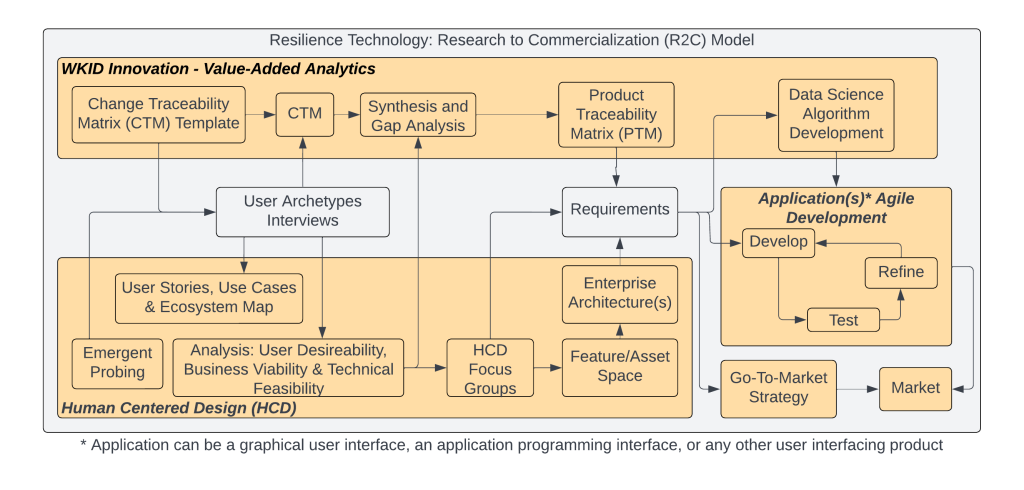Designing environmental resilience technology that transition research to commercialization providing sustainable solutions
In this paper we talk about a model for defining requirements for providing information technologies and data analytics as “environmental resilience technologies”. This methodology combines systematic analysis of the decision space with human centered design (HCD) to provide a model for transition research in environmental resilience to commercialization.
We use WKID Innovation to define solutions-oriented science and HCD to identify value-added analytics that can be commercialized. By combining these two methods, we intentionally and systematically design changes to policy, economies, sociocultural constructs such as “wildfire risk”, and tools/technologies.
The presented research to commercialization (R2C) model enables us to shift away from a reactive state to perturbations in our system (e.g., global warming and subsequently climate change with more extreme events and loss of biodiversity), to one that is proactive. It enables a world where research on environmental sciences can inform data-driven solutions to building more resilient communities.

Why is this so needed?
One of the primary reasons why transitioning research to operational decision support falls short is the lack of planning for a sustainable business model.
Case Study: The Wicked Wildfire Problem of the West
In this open access paper, we don’t just provide this model for research to commercialization, but we provide a thorough analysis of the wildfire fire decision space across the Western United States. For those interested, please focus on sections 2.4, 3.1 and 4.1 as our case study! In particular, pay attention to Tables 1 and 2!!!
This is a very personal example, very close to my heart. Wildfire is what has made climate change a climate crisis for me and my family.
